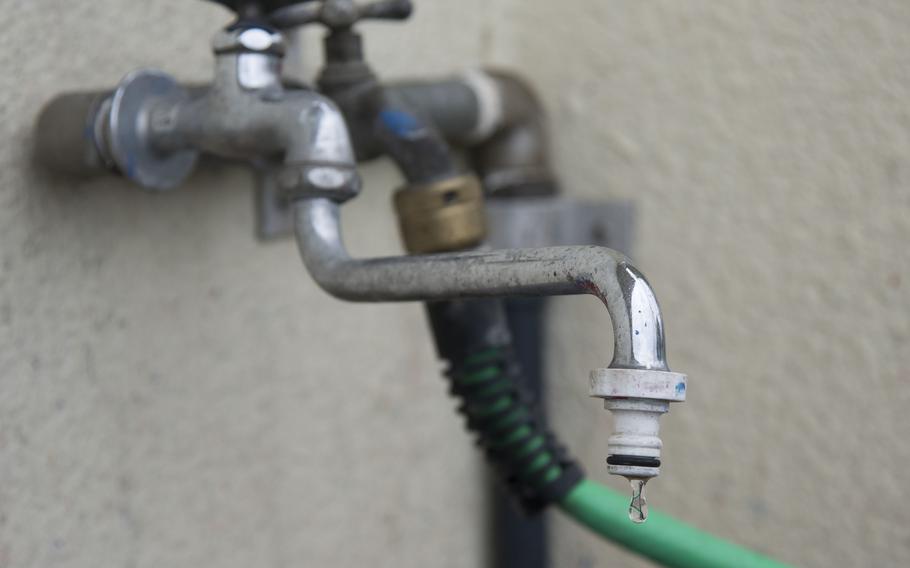Asia-Pacific
Japan to make tougher standard permanent for PFAS in tap water
Stars and Stripes December 26, 2024

A water faucet on Camp Foster, Okinawa. Japan will soon set a new legal standard for levels of PFAS in tap water and require regular testing for the chemicals. (Keishi Koja/Stars and Stripes)
Japan will soon set a new legal standard for levels of PFAS in tap water and require regular testing for the chemicals.
The Environment Ministry during an online experts meeting Tuesday agreed to adopt a target value of 50 nanograms per liter, or 50 parts per trillion, for PFOS and PFOA — components of PFAS, also known as “forever chemicals” — in its water quality standards. The value was provisionally set in 2020.
If approved, the provisional value would be added to Japan’s water quality standards list in the Water Supply Act, which regulates 51 other substances found in tap water.
The expert panel, made up of eight university professors and researchers, also called for water providers to test tap water for PFAS every three months. That schedule could be reduced to once or twice per year on small-scale water supply services “if the possibility of detecting PFOS and PFOA is low based on a previous test,” according to a policy draft posted to the ministry’s website.
Marine Corps Installations Pacific, which manages the Marine Corps’ bases in the Indo-Pacific, including Japan, will “continue to adhere to all relevant agreements, obligations and procedures” in coordination with U.S. Forces Japan and Japan’s government, spokesman Wes Hayes wrote in an email on Thursday.
U.S. Forces Japan did not respond to an email or phone calls on Thursday seeking comment.
The Department of Defense currently requires corrective action to be taken if levels of PFOS and PFOA exceed 70 parts per trillion, according to public drinking water notices on MCIPAC’s website.
The ministry will review the draft for any changes. If approved by the government, it will go into effect in April 2026, a ministry spokesman said by phone Thursday.
“Water providers will need to conduct regular testing and take measures if high contamination is detected,” the spokesman said.
PFAS and its components, PFOS and PFOA, are found in firefighting aqueous film forming foam, once commonly used on some U.S. military bases. They are also found in a wide variety of consumer products, including nonstick cookware and stain-resistant clothing and fabrics.
PFAS has been linked to an increased risk of certain tumors of the liver, testicles, breasts and pancreas, according to the American Cancer Society. The Environmental Protection Agency has said that no level of PFAS is safe in drinking water.
U.S. air bases in Japan and Japanese military bases no longer use the aqueous foam. U.S. Forces Japan in mid-November reported it had incinerated its last supply of the foam.
As of Sept. 30, 1,745 water suppliers in Japan had tested for PFAS and found no contamination, according to the policy draft. Levels of PFAS are below the 50 parts per trillion standard for 98.2% of the Japanese population who receive water supply services, the draft stated.
Some Japanese government officials may speak to the media only on condition of anonymity.
The Environmental Protection Agency in April adopted the first standard for PFOS and PFOA levels in drinking water in the U.S., setting the limit at 4 parts per trillion. Since 2016, the agency had recommended levels of no more than 70 parts per trillion, according to the Associated Press.